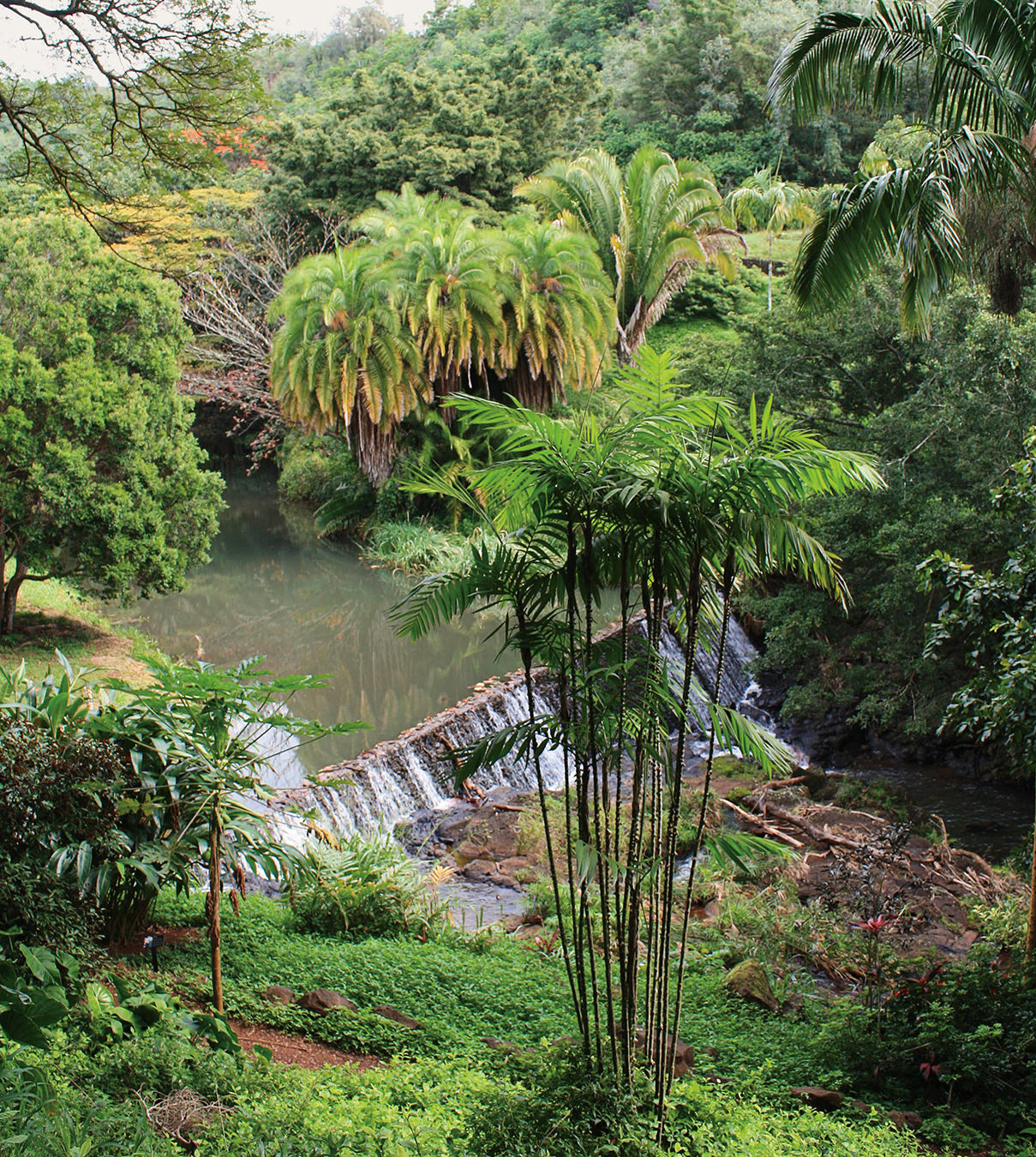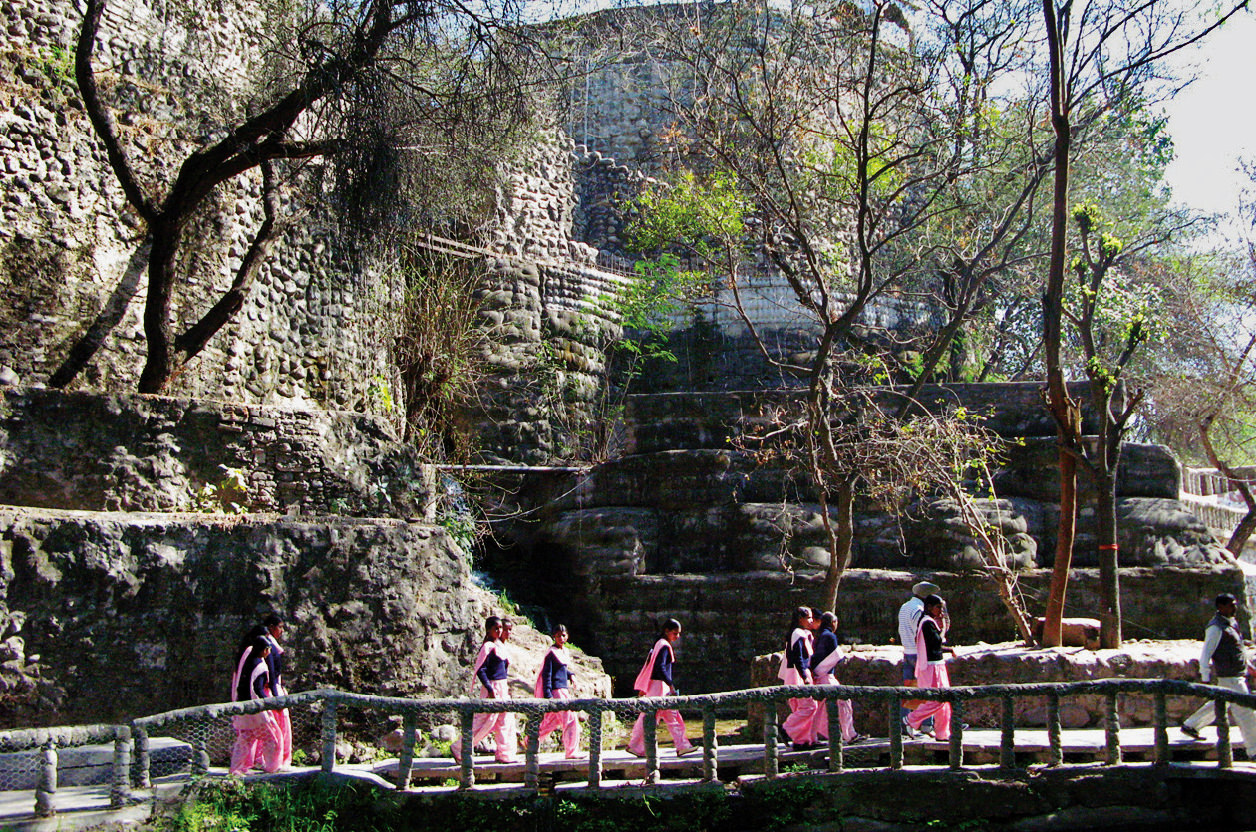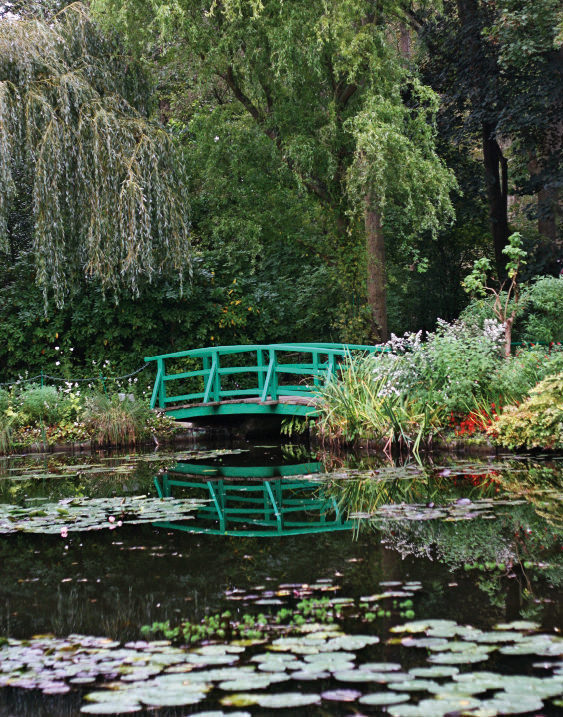-
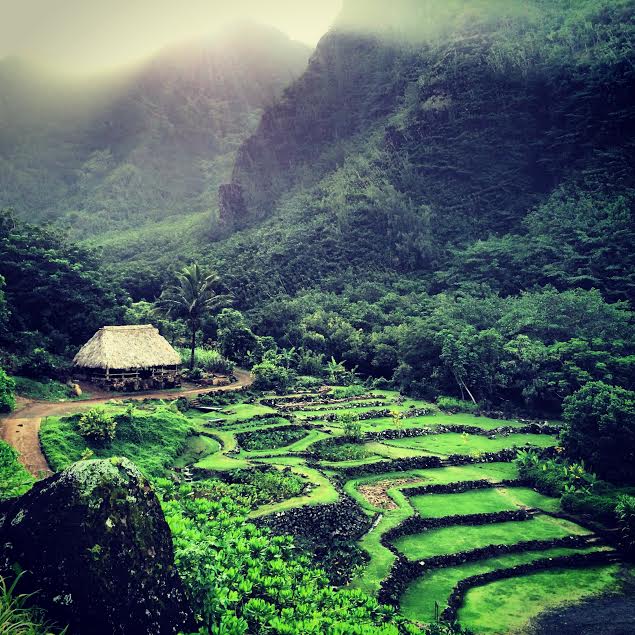
The ancient agricultural terraces at Limahuli Garden and Preserve.
-
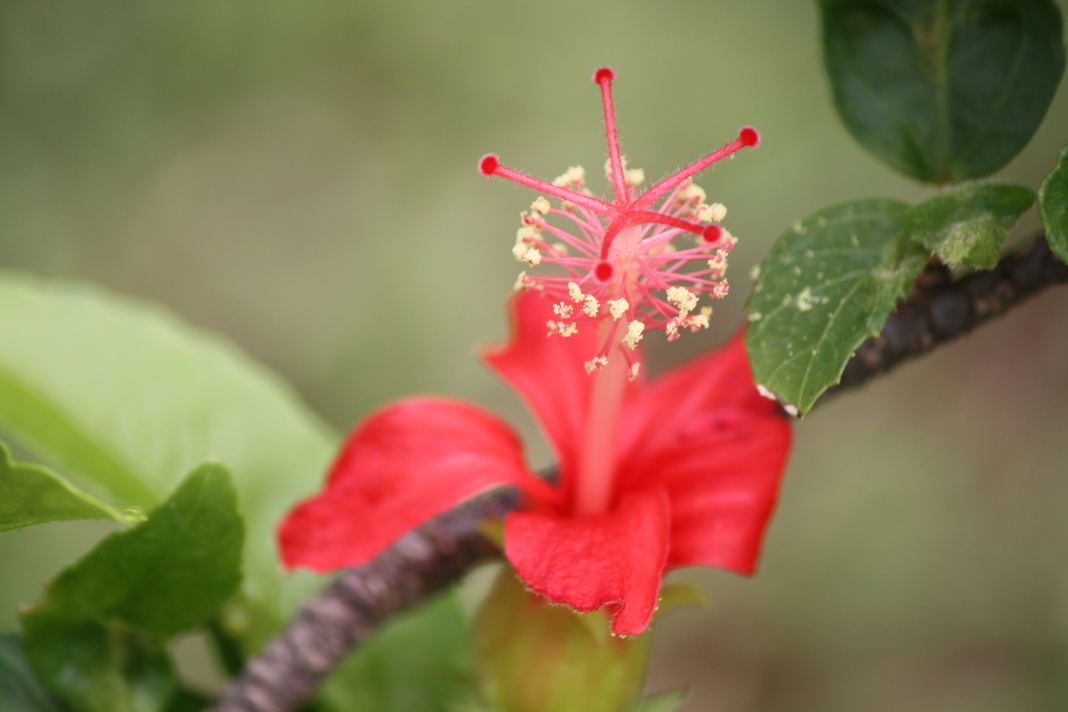
The scarlet Hibiscus kokio subsp. kokio only grows on Kauai.
-

Brighamia insignis, known as alula in Hawaiian.
-
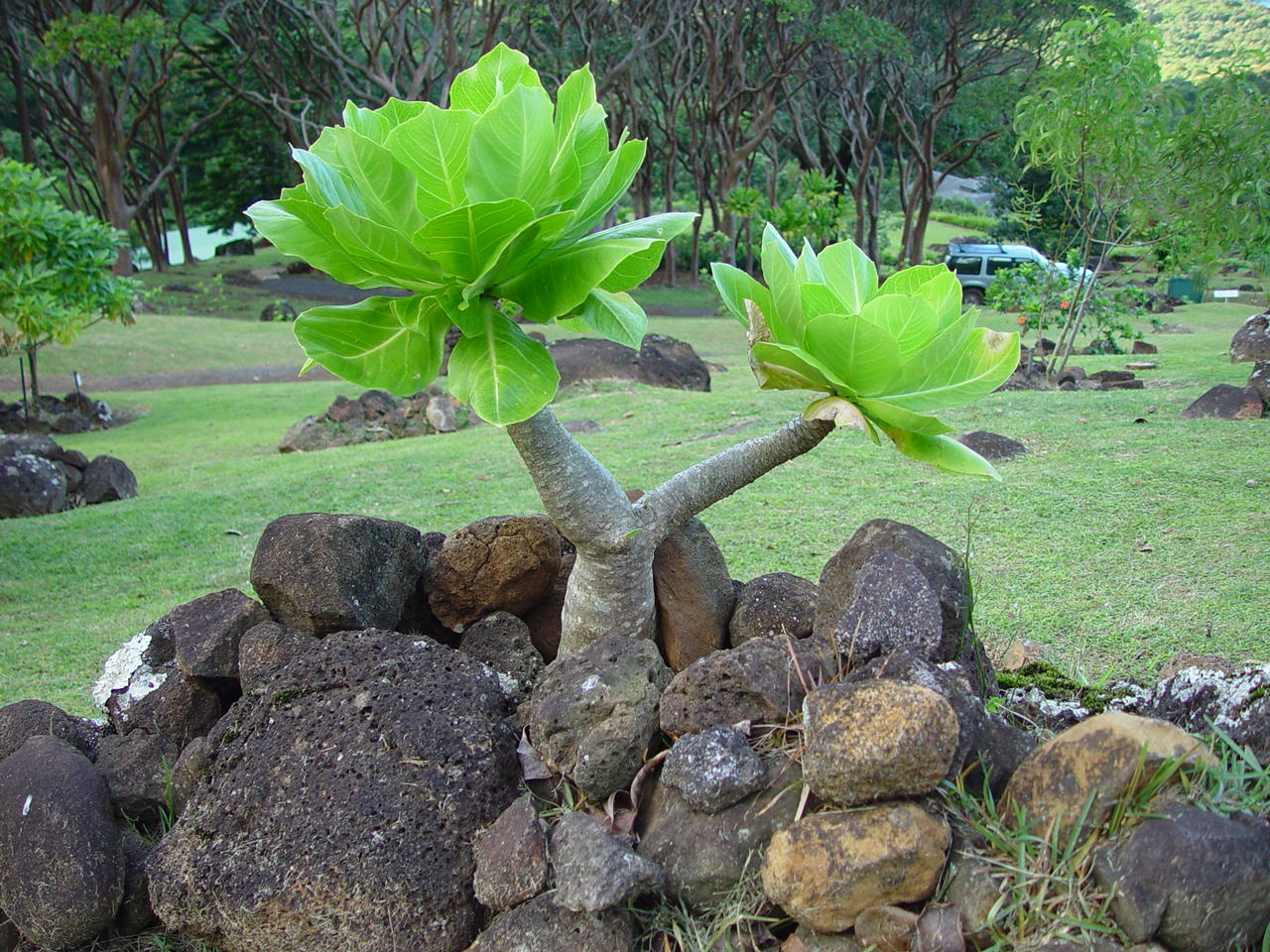
The alula is endemic to Kauai.
-

Looking out to Limahuli Garden from behind a Pandanus tectorius (in Hawaiian hala, in English screwpine).
-
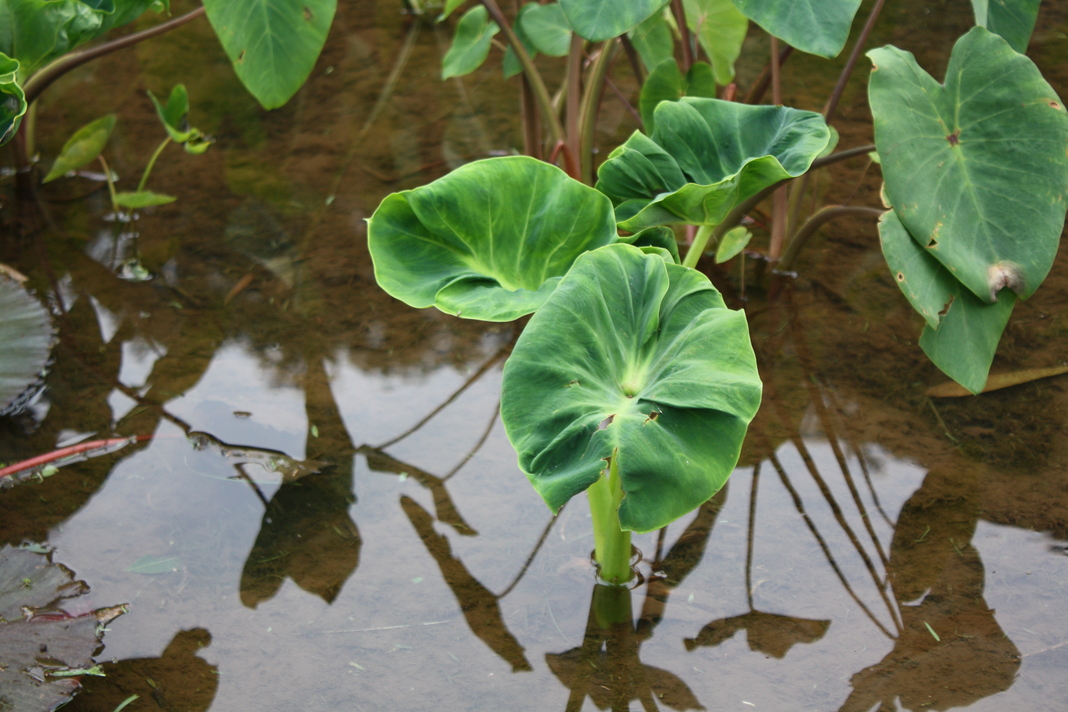
Calocasia esculenta, more commonly known as taro (or kalo in Hawaiian).
-
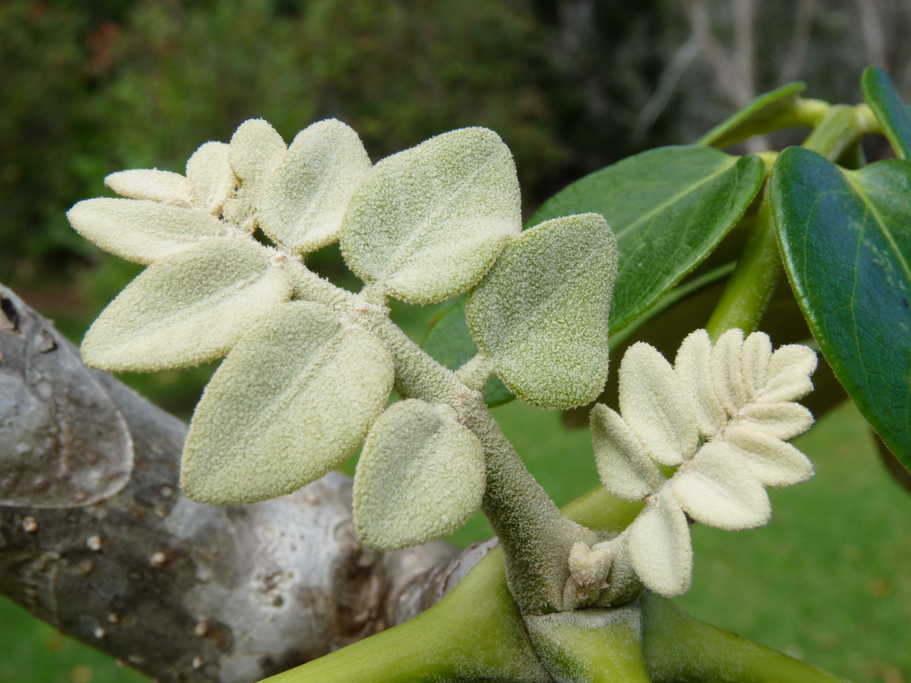
The Polyscias racemosa is another plant that is endemic to Kauai.
Limahuli Garden and Preserve
The garden at the edge of the world.
Consider a garden, especially a garden on Kauai, Hawaii’s fourth largest island. What would you expect to see? Acres of colourful and fragrant flowers? Paths lined with artfully arranged bushes that meander past artificial fountains and tumbling waterfalls? Those gardens exist on Kauai, but the Limahuli Garden and Preserve is not one of them. “People often come out of the garden in tears”, says Lahela Correa, the visitor program manager, “because they have connected with the spirit of the valley. We consider that a successful visit.”
The Limahuli Garden and Preserve is one of five gardens that make up the National Tropical Botanical Garden. The Limahuli Garden’s ancient history, deep cultural links, and heroic gardening practices make it unique among Hawaiian gardens.
It’s a challenging 30-minute drive to the garden from the luxury resorts of Princeville on Kauai’s north shore. The narrow, cliff-hugging Kuhio Highway careens around multiple switchbacks, squeezes onto single-lane bridges, and tip-toes through a bubbling stream. The reward is this lovingly-restored ancient Hawaiian site, sheltered by Makana Mountain with its wind-chiseled tips, an outpost of the majestic, emerald accordion folds of the Napili Coast. Gazing out over the ocean from the Whale Trail lookout, it’s easy to imagine that you are at the edge of the world. The Hawaiian Islands are among the most remote archipelagos in the world, 3,200 kilometers from the Marquesas and 8,050 kilometers from the Philippines.
Gazing out over the ocean from the Whale Trail lookout, it’s easy to imagine that you are at the edge of the world.
Kauai was born from volcanic activity about six million years ago. As the black fields of lava broke down into rich red soil, seeds carried by water, wind, and the wings of birds found a foothold. With no natural enemies to contend with, these plants gradually lost their defenses of spines and poisons, leaving them vulnerable when the first humans arrived around 1000 CE. The Polynesians brought many edible, medicinal, and culturally important plants, the so-called “canoe plants”: mai’a (banana), ‘uala (sweet potato), kalo (taro), and ko (sugar cane). Once Captain Cook landed in 1778, intense destruction of endemic plants began. Fields were cleared for cattle and crops, and new species of invasive plants and animals were introduced by people from all over the world.
As you climb past ancient agricultural terraces, through sunlit meadows and shadowed forests beside one of Kauai’s last pristine streams, nearly all the plants and trees that you see are extremely rare and endangered. They represent Kauai’s botanical and cultural past, its present, and hopeful future.
Botanists like Steve Perlman have risked their lives to rappel down cliff sides to gather the last remaining specimens of plants that can’t be found anywhere else on Earth; plants like the Brighamia insignis. Only one plant exists in the wild; others are being tended in the preserve. Perlman fondly describes it as “a cabbage on a bowling pin”. There are beautiful flowers here too, like the fragrant scarlet hibiscus that only grows on Kauai. The Limahuli Garden is a refuge for “legends, and the true important things: plants, air, mountains, and ocean, and being present in a healing place”, says Correa. Take a moment and embrace the spirit of the valley.
Limahuli Garden and Preserve, 5-8291 Kūhiō Hwy, Haena, Kauai, HI, +1 808-826-1053
_________
Never miss a story. Sign up for NUVO’s weekly newsletter.

